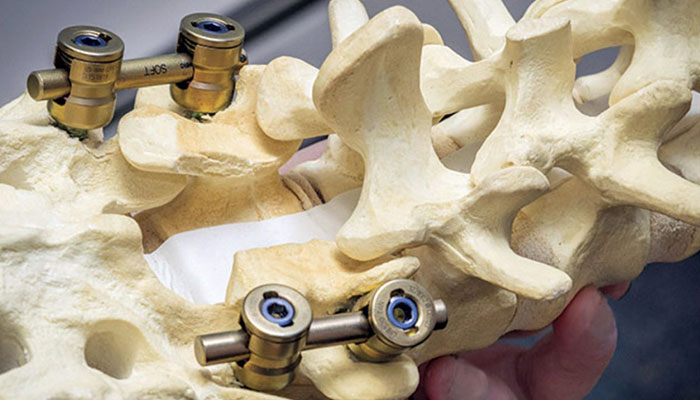
Spinal fusion involves getting two or more of your vertebrae to grow together into one bone. It’s done to prevent movement of the affected bones and therefore reduce pain. It’s used to treat a weak or unstable spine, a degenerated disc or facet joints, a fracture, tumour, scoliosis or a deformity. Spinal fusion is the most common type of surgery for chronic back pain. Your surgery may also include decompressing of your nerves or spinal cord and then stabilising the spine.
To perform this procedure, your surgeon makes an incision in your back, side or abdomen (for lumbar spinal fusion) or your neck (for cervical spinal fusion). Your surgeon may remove part of the spinal structures that are compressing nerves. Sometimes devices are placed into the disc space or screwed into your vertebrae to hold them together (known as internal fixation). Your surgeon places a bone graft around the devices to encourage the bones to fuse. The graft may be taken from your hip or harvested from a donor. Alternatively, human bone from a bone bank or synthetic bone may be used.
There are many different fusion techniques and your surgeon can explain the pros and cons as well as risks and benefits of each option.
Copyright © All Rights Reserved, By Shethna Spine Clinic